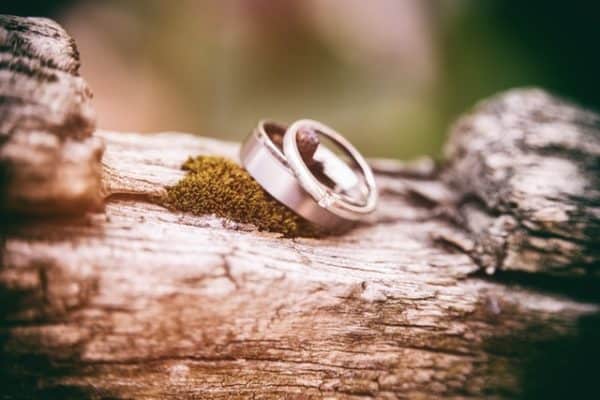Wedding bands are a tradition that dates back thousands of years. But wedding bands today look different than they did in the past, and people treat them differently as well. How exactly have wedding band trends evolved? And what lies in store for the future of wedding bands for women and men?

The Origins of Wedding Bands
It’s not entirely clear when and how wedding bands and engagement rings began to emerge. We don’t have concrete, formal documentation that explains when and how they began to grow popular. However, there’s a popular theory that modern wedding bands can be traced back to ancient Egypt: “Egyptian pharaohs wore and gave rings to represent eternity, with the circle reflecting their cultural belief that your soul lives on even after your body is deceased. The ‘ouroboros’ ring portrayed a common Egyptian motif: a serpent swallowing its own tail, symbolizing the cycle of life.”
Additionally, Egyptians were the ones who popularized wearing a wedding band on the left hand; they believed that the “ring finger” of your left hand contained a specific vein that connected to the heart directly. It’s not an anatomically correct idea, but it’s one of the earliest ideas that attempted to add symbolism of love and bonding to a physical ring.
After Alexander the Great of Macedonia conquered Egypt, Greek, and Egyptian culture began to cross over. Soon, Greece (and subsequently Rome) adopted the tradition to exchange rings as part of early marriage ceremonies. By the 2nd century, it was common for rings to be made of precious metals – most commonly gold.
Ring Symbolism and Historical Use
Today, we commonly accept that wedding bands symbolize love – but that wasn’t always true, and wedding bands weren’t always used as consistently as they are today. For most of human history, marriage was relatively informal.
Anyone could “marry” anyone else with nothing more than a verbal commitment (and, at times, a wedding band, though this wasn’t guaranteed). It was only in the 12th century that wedding bands became more common, serving as a part of the holy ceremony of an “official” marriage sanctioned by the church.
Despite the holy title and increased formality, marriage wasn’t necessarily seen as the union of two people in love. Instead, marriages were commonly used as a kind of strategic union between families; arranged marriages were common, as were high-pressure marriages used by families to consolidate power. In this context, wedding bands were a display of legal commitment of loyalty, rather than a pledge of love or other subjective emotion. Over time, wedding bands have gone from symbolizing a formal, legal, strategic alliance, to symbolizing true love between two parties.
The Emergence of the Engagement Ring
For most of our history, an engagement ring was out of the question. Wedding bands were always expensive, and sometimes optional; families had to work hard to get a wedding band, and the wedding band they could afford was plain and undecorated. Buying two rings was not practically feasible, especially if one of those rings contained rare gemstones and other embellishments.
Engagement rings only began to emerge during the 18th century, when a steady supply of diamonds began to flow from Brazil and other countries. During the Victorian Era, public taste in jewelry began to grow more ostentatious, and diamonds became something of a trend.
Later on, in the late 19th century, diamond companies got the idea to start marketing engagement rings as the ultimate symbol of love. Thanks to a handful of clever advertising campaigns, our modern perceptions of engagement rings and wedding ring dynamics began to take hold. By World War II, when active servicemen used engagement rings as a kind of “promise to come home,” these traditions became solidified.
The Modern Era (and What Comes Next)
Engagement rings and wedding bands continued to be used across Western society, even by people who reject traditional religious norms associated with marriage. However, the perception of rings as a necessity is beginning to decline; some couples are forgoing rings altogether. Others are wearing their rings only occasionally. Many couples are starting to stray from strict traditions, choosing to buy rings together or opt for nontraditional engagement rings. It’s potentially a byproduct of more independent, tradition-rejecting decision-making, which means this trajectory is likely to continue indefinitely.
Wedding bands and engagement rings have come a long way, from being a rare ancient Egyptian cultural tradition to being a common symbol of love for relationships all over the world. It’s hard to say exactly how wedding bands and engagement rings will develop from here, but with an influence that’s already lasted thousands of years, it’s unlikely that these cultural touchstones are going away anytime soon.
 Gearfuse Technology, Science, Culture & More
Gearfuse Technology, Science, Culture & More

